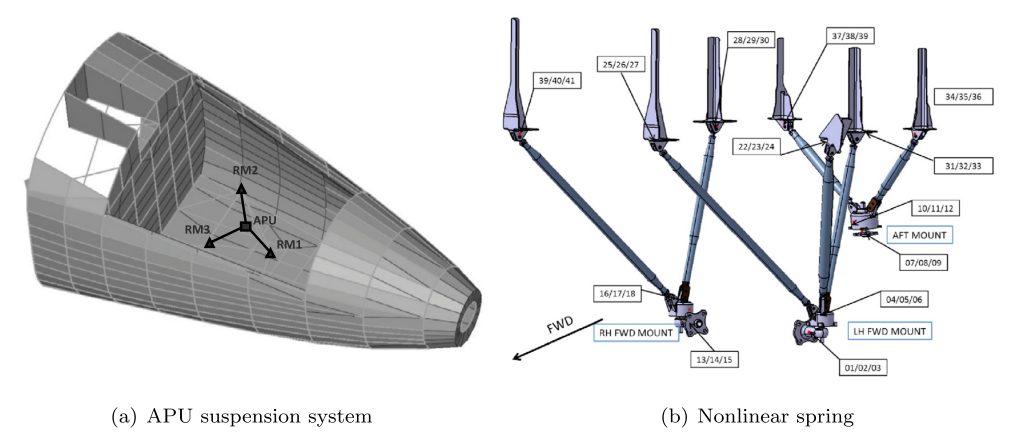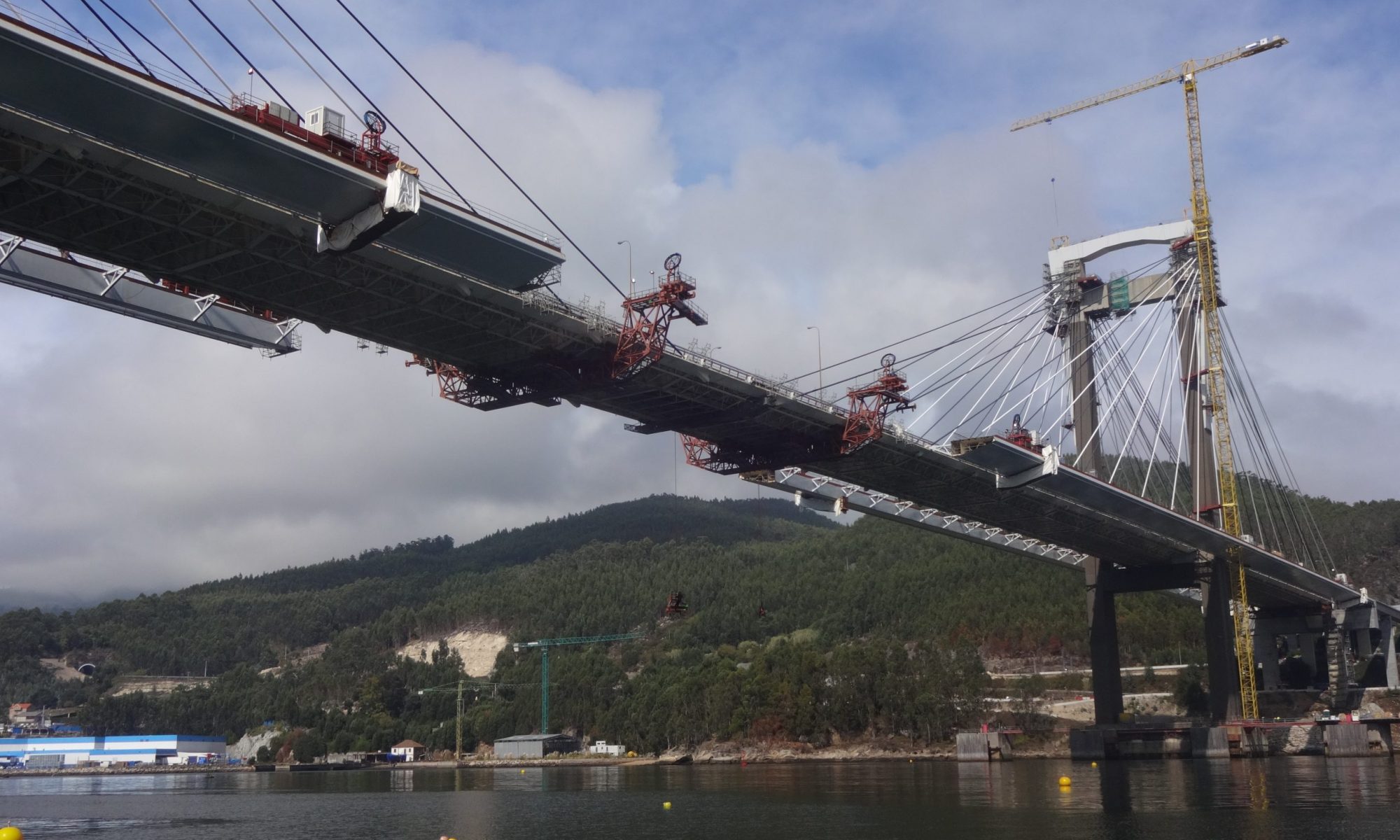Junction modeling and nonlinear frequency response of assembled structures
Ground Vibration Test (GVT) is a crucial step in the design process of a new aircraft. The test involves the analysis of different load configurations that helps to understand the real structural behaviour, to certificate some extreme load cases, and also to validate and improve the Finite Element (FE) model used in the design. The validation of the FE model is done by making a comparison between Frequency Response Functions (FRF) from the GVT and the FE model at some response points. Ideally, numerical and experimental results should be in agreement. This is certainly true in the case of single components but in the case of assemblies, it is common that numerical and experimental results show discrepancies, especially in the case of dynamic analysis. These differences increase as the number of components in the assembly grows because connections are usually not represented sufficiently well in the FE model. The components of these assembled structures are usually connected at a small number of points, and they can be seen as local sources of stiffness and damping. In the FE model, these joints can be represented as lumped spring/damper elements in a simplified way. In this study, a formulation of the dynamic equilibrium equation employing a decoupled approach for the joint mechanical properties of an assembly is presented. Later, an optimization process based on this formulation that involves the joint properties as design variables has been developed in order to identify the joint parameters that improve the adjustment between numerical and experimental FRF in the case of harmonic excitations. The approach has been applied to a FE model that represents the connection between a segment of the fuselage and the tail cone and to a real aircraft system where experimental data is available. The results achieved with this procedure are very efficient and promising.


parallel. Hernández et al. Aerosp Sci Technol, 69: 538-549, 2017.
Dynamic analysis of assembled aircraft structures with nonlinear joints
Dynamic analysis is an essential part of aircraft design and the behavior of structural components of aircraft systems needs to be evaluated undergoing time-varying loads. This is done by creating Finite Elements (FE) models and carrying out dynamic analysis in the frequency or time domain. The first approach is faster but only can be used in linear theory, namely when all materials involved in the structural model have linear constitutive equations. But sometimes FE models of aircraft structures contain a small number of non-linearities usually localized in the connection points between the assembled components. In this study, an approach that allows performing frequency analysis in structural models having several nonlinear springs is presented and its performance is compared with the results provided by time domain analysis methods. An application example that represents a quite realistic assembly between two fuselage sections and a real aircraft connection system is presented.


Journal papers
Hernández, S., Menga, E., Naveira, P., Freire, D., López, C., Cid Montoya, M., Moledo, S., and Baldomir, A. (2018) Dynamic analysis of assembled aircraft structures considering interfaces with nonlinear behavior. Aerospace Science and Technology, 77:265-272.
DOI: j.ast.2018.03.004
Hernández, S., Menga, E., Moledo, S., Romera, L., Baldomir, A., López, C. and Cid Montoya, M. (2017) Optimization approach for identification of dynamic parameters of localized joints of aircraft assembled structures. Aerospace Science and Technology, 69: 538-549.
DOI: j.ast.2017.07.026
Conferences
Hernández S, Menga E, López C, Baldomir A, Cid Montoya M, Freire D, Moledo S and Naveira, P. (2017) “An improved software for frequency domain analysis of assembled aircraft structures with local nonlinearities” IFASD2017. International Forum on Aeroelasticity and Structural Dynamics, 25-28 June 2017, Como, Italy.
Hernández S, Menga E, Naveira P, López C, Baldomir A, Cid M, Moledo S and Freire D (2017) “Dynamic analysis of assembled aircraft structures with nonlinear joints” 58th AIAA/ASCE/AHS/ASC Structures, Structural Dynamics, and Materials Conference, AIAA Science and Technology Forum and Exposition 2017.
DOI: 10.2514/6.2017-1592
Hernández S, Cid M, Moledo S and Menga E (2015) “A software for filtering ground vibration test measurements and its use for identification of dynamic properties of aircraft structures” IFASD 2015: International Forum on Aeroelasticity and Structural Dynamics. 28 June –02 July 2015, Saint Petersburg, Russia
Hernández S, Moledo S, López C, Cid M, and Romera L (2014) “Identification of dynamic properties of assembled structures by optimization of the modal assurance criterion (MAC) and modal base”. 4th Aircraft Structural Design Conference. Royal Aeronautical Society. 7-9 October 2014, Belfast, UK
Hernández S, Menga E, López C, Cid M and Moledo S (2013) “A methodology for identification of dynamic parameters in assembled aircraft structures” CMEM 2013: 16th Int Conf on Comp Methods and Exp Measurements. WIT Trans on Modelling and Simulation, Vol. 55, WIT Press 2013, ISBN: 978-1-84564-732-2, pp. 353-366.
DOI: 10.2495/CMEM130291
Technical reports
Cid, M., Moledo, S. and Hernández, S., 2014. FRFOPTI. A software for structural model dynamic parameters identification. User’s manual. UDC. Funded by AIRBUS.
Hernández, S., Cid, M., Moledo, S., López, C., Freire, D., and Naveira, P. 2015. ANFRA. Advanced Nonlinear Frequency Response Analysis. User’s manual. UDC. Funded by AIRBUS.
[Link]
